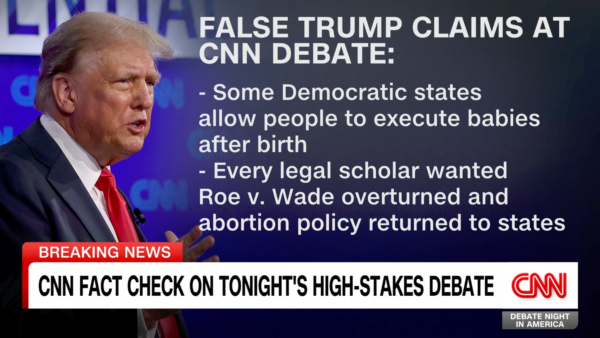Demographics alone are not enough
Racial make-up and demographic trends in Dallas County have been cited frequently to explain the literal sweep of county-wide offices. Demographics alone, though, provide an incomplete picture. The potential “base Democratic vote” in Dallas County has been sufficient for at least three cycles to elect a large slate of Democrats. However, only very modest gains were realized in 2002 and in 2004. The maps on this page are based on the 2000 census. They illustrate that even at the beginning of the decade, relatively large numbers of minority residents lived in most parts of Dallas County.
View the Maps
Maps provided by the National Committee for an Effective Congress
What was done differently?
The key difference in ’06 was that local party leaders made a conscious and difficult decision to restructure their party under the leadership of a trusted new chair, Darlene Ewing. (Dallas Morning News, March 25, 2005) Under the leadership of Ewing, they then funded and executed a well-conceived plan that emphasized communicating to highly targeted voters in every part of the county. The new leadership at the local party employed a smart but basic four-step strategy:
- Target voters county-wide who are identified as either “hard” or “soft” Democrats who have recent voting history but do not always vote in non-presidential years (sometimes referred to as “drop off” voters).
- Use targeted mail and both live and recorded calls to communicate with the entire universe emphasizing populist Democratic issues and a “Power to Change” message.
- Conduct aggressive paid and volunteer “ground-troop” activities and door-to-door efforts run by capable and experienced organizers.
- Rely upon highly respected local elected leaders such as State Senator Royce West and Democratic State House Members to deliver the party message through paid media, particularly radio.
Local efforts leveraged new investment
The absence of a well-funded or well known state-wide Democratic candidate could have hurt Dallas Democrats badly. In 2002, the last non-presidential election year, Ron Kirk’s Senate campaign invested heavily to turnout Dallas Democrats, particularly in the southern sector. None of the ’06 Democratic state-wide candidates could afford county programs. However, the financial commitment by local Democratic donors and candidates themselves in Dallas encouraged new investors. This additional investment generated at least four direct mailers to hard and soft Democrats totaling nearly 250,000 total pieces of mail.(See a sample mailing here) The mailings were then reinforced by more than 250,000 live and recorded phone calls.
- Texas Values in Action Coalition brought new funds to Dallas
TEXVAC spent over $65,000 on base voter communication in addition to thousands more spent to support local Dallas County legislative candidates. - Texas Democratic Party, HDCC and the Texas Democratic Trust
The Texas Democratic Party and the House Democratic Campaign Committee with the strong support of the Texas Democratic Trust combined to invest well over $100,000 to pay for a senior mail ballot program and additional early vote and Election Day mail and phone calls, all encouraging “straight-ticket” Democratic votes.
Results
Democrats dominated straight ticket voting.
Even though voter turnout county-wide was lower than in 2002, Dallas Democrats were able to win a disproportionate share of the straight ticket vote which maximized candidate strength in down-ballot races. The 2006 Democratic straight ticket advantage exceeded the 2002 Democratic advantage by almost five-fold.
| Democratic Straight Ticket Advantage in 2006 | |||
| Year | 2002 | 2004 | 2006 |
| Dallas | 3,719 | 12,931 | 16,136 |
(Source: Dallas County Elections Department, Texas Democratic Party Voter File)
Effective use of voter file favored Dems
Rather than base targeting on precinct performance and geographic measures only, relatively sophisticated “voter level” targeting available from the Texas Democratic Party’s voter file was used to identify likely Democratic voters in every part of Dallas County. The partisan leaning of more than three quarters of those who voted was known, and Dallas Democrats used this knowledge to intensely communicate a Democratic message to their partisans. As a result, Dallas Democrats were able to outvote the Republicans.
| 2006 Dallas Voter Summary | ||
| Voters | Percentage of Total Vote | |
| Hard-Democrat | 50,861 | 13.4% |
| Soft-Democrat | 99,917 | 26.4% |
| Unknown | 84,297 | 22.3% |
| Soft-Republican | 101,372 | 26.8% |
| Hard-Republican | 42,089 | 11.1% |
| Totals | 378,536 | 100.0% |
(Source: Dallas County Elections Department, Texas Democratic Party Voter File)
| 2006 Dallas Partisan Head to Head Summary | |||
| Partisan Voters Head to Head | Identified Voters | Percentage of Identified Voters | Percentage of Total Voters |
| Hard & Soft Democrat Total | 150,778 | 51.2% | 39.8% |
| Hard & Soft Republican Total | 143,461 | 48.8% | 37.9% |
| Democratic Advantage | 7,317 | 2.5% | 1.9% |
| Totals | 294,239 | 100.0% | 77.7% |
(Source: Dallas County Elections Department, Texas Democratic Party Voter File)
There was no southern sector slump
Democrats entered the cycle worried that the absence of an adequately funded or a well known Democrat on the statewide ticket would lead to a dramatic drop in voting in the heavily minority southern sector of Dallas County. Popular former Dallas Mayor Ron Kirk was featured on the ticket in ’02 and sparked strong turnout that year. For Democrats to win in Dallas in ’06, more than 40 percent of the Democratic vote had to be generated from the southern sector (primarily Senate District 23) which made up less than one-third of the eligible voters. An aggressive southern sector ground program featuring targeted door-to-door voter contact and neighborhood phone banks was organized and managed by professional organizers. The program was augmented by effective on-air communication from Senator Royce West and North Texas State House Members. This smart, aggressive program led to the Southern sector meeting and then exceeding the 40 percent threshold.
| 2006 Dallas County Turnout | ||||
| % of Voting Age Population | % of Registered Voters | % of 2006 Voters | % of Dem Vote | |
| Senate District 23 | 29.9% | 30.8% | 27.0% | 41.2% |
| Rest of the County | 70.1% | 69.2% | 73.0% | 58.8% |
(Source: Dallas County Elections Department, Texas Democratic Party Voter File)



